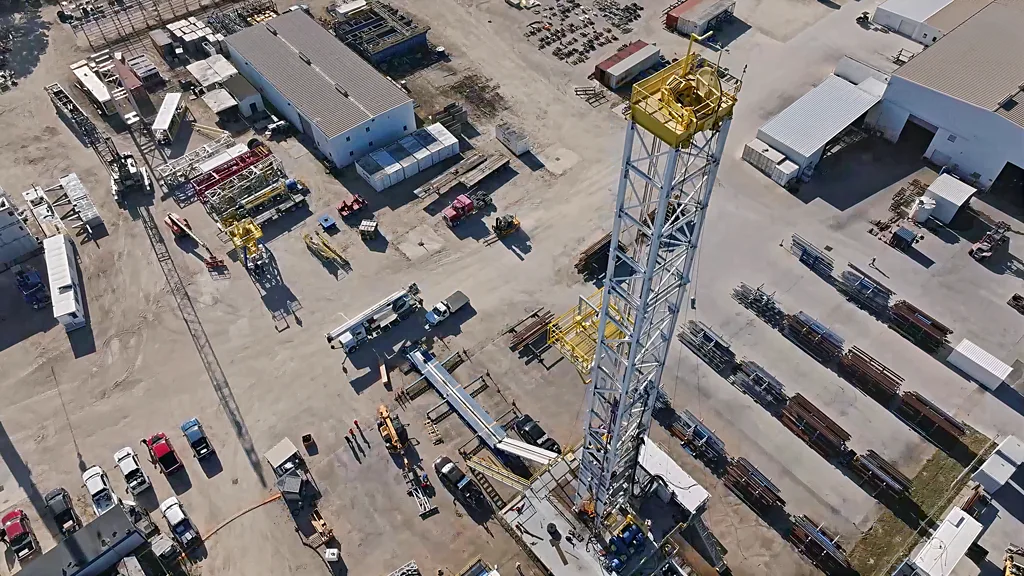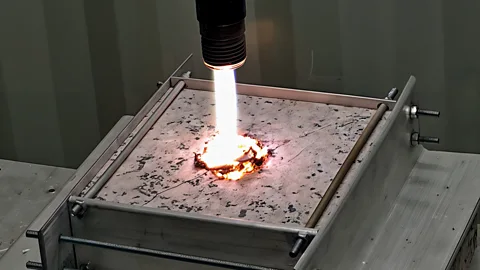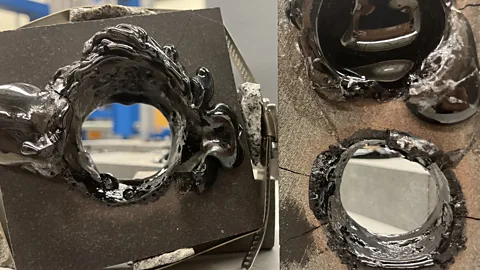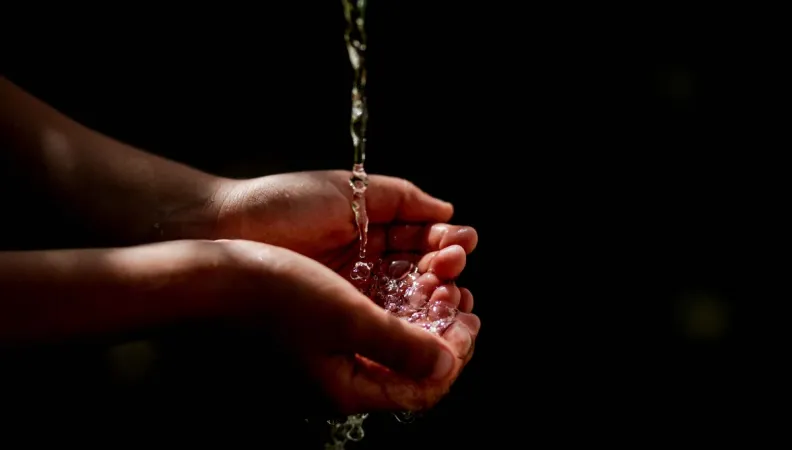The hunt for heat: Drilling the deepest holes on Earth
Geothermal energy, a virtually inexhaustible and clean energy source, has vast potential but is underutilized due to the high cost and technical challenges of drilling to the necessary depths. Pioneering efforts in advanced drilling technologies, such as millimetre-wave and plasma drills, are aiming to unlock deep geothermal resources and make this energy accessible worldwide.

Beneath our feet is an almost limitless source of energy, but while a few lucky locations have geothermal heat close to the surface, the rest of the world will need to dig a lot deeper. The challenge is how to get deep enough.
There are some spots around the world where energy literally bubbles to the surface. In Iceland, home to more than 200 volcanoes and dozens of natural hot springs, tapping into this energy isn't hard. Dotted around the country are steaming pools of water, heated by the geothermal fires that burn just below the crust. Boiling jets of water and steam are thrown into the air by geysers.
Iceland now heats 85% of its houses with this geothermal energy, while 25% of the country's electricity also comes from power stations that harness this heat from underground. It's an appealing prospect – an almost limitless supply of energy waiting to be tapped.
But geothermal energy offers an essentially inexhaustible green energy source across the planet. And it's "always on'', unlike wind or solar power, since the heat is continually emitted from the Earth's molten core and the decay of naturally occurring radioactive elements in our planet's crust. Indeed, the Earth emits such enormous amounts of energy as it cools that the heat lost into space each year is enough to meet the world's total energy demands many times over.
The challenge is tapping into that energy.
Currently only 32 countries in the world have geothermal power plants in operation. There are fewer than 700 power plants around the world, generating around 97 Terawatt hours (TWh) in 2023 between them. That is less than half the amount of electricity generated by solar in the US alone and far short of estimates for the potential contribution that geothermal could make to the global energy mix. Some estimate that geothermal could contribute around 800-1400TWh of electricity annually by the middle of the century with a further 3,300-3800TWh per year of heat.
"The Earth itself has the potential to address a variety of hurdles in the transition to a clean energy future," argued Amanda Kolker, geothermal programme manager at the National Renewable Energy Laboratory (NREL) in the US, when releasing a report on the potential of geothermal energy in 2023.
But not every country is as lucky as Iceland, where reservoirs of hot water at temperatures of around 120-240C (248-464F) can be easily accessed close to the surface. In other areas of the country, wells drilled to depths of up to 1.5 miles (2.5km) provide access to temperatures of up to 350C (662F). Iceland's main geothermal site at Reykjanes, for example, has drilled experimental wells down 2.9 miles (4.6km) to access superheated fluids as hot as 600C (1112F). Already, day-to-day heat extraction is taking place using shallower wells that draw on temperatures around 320C (608F) to generate 720 Gigawatt hours (GWh) of electricity per year.
One reason geothermal is not more widespread is the high upfront investment needed to extract that energy. But physically reaching it has also been beyond us so far.
For other parts of the world to enjoy a part of this geothermal bonanza of clean energy, we need to drill deeper to reach the temperatures needed to generate electricity or provide large-scale heating for nearby neighbourhoods.
 Getty Images
Getty ImagesAcross much of the planet, temperatures increase by 25-30C (77-86F) on average every kilometre you go down through the Earth's crust. In the UK, for example, the subsurface temperature at around 5km (3 miles) down is about 140C (284F), according to the British Geological Survey.
Drill down far enough, though and it is possible to reach a point where water temperatures surpass 374C (705F) at pressures above 220 bars (one bar being average pressure on the Earth's surface at sea level). This is where water enters an energy-intense state known as supercritical, where it exists in a form that is neither liquid or gas. The hotter and more pressurised it is, the greater energy it contains.
In fact, a single superhot geothermal well could produce five to 10 times the energy that commercial geothermal wells produce today, according to the NREL.
One major hurdle, however, is that conventional rotary drills – even those tipped with diamond – are ill-equipped to excavate to the kind of depths needed to access these kinds of temperature. In the mysterious deep underworld of uncertain geology, extreme temperatures and huge pressures, drill components can fail frequently, while keeping holes from becoming blocked is a constant battle.
In 2009, for example, a team working on the Iceland Deep Drilling Project inadvertently tapped supercritical conditions when it drilled into a magma chamber at the Krafla volcano, about 1.2 miles (2km) below the surface. The superheated steam emitted from this well was highly acidic, making it difficult to use. The high pressures and temperatures involved also made it difficult to control, and it had to be intermittently discharged for around two years before a valve failure forced the hole to be sealed.
Deep drilling can also be an expensive and time-consuming endeavour.
The deepest hole ever dug by humans dates back to the Cold War, however, when there was a race between the superpowers to drill as far into the Earth's crust as possible. The Soviets managed to plough their way through 7.6 miles (12.2km) of rock – creating the Kola Superdeep Borehole, on the Kola Peninsula, high in the Arctic Circle. It took them almost 20 years to reach that depth and it remains the deepest humans have managed to delve into the Earth. (Read more about the Kola Superdeep Borehole in this article by Mark Piesing.)
The NREL estimates that the cost of drilling a 1km deep well is around $2m (£1.57m) while drilling four times that depth can cost between $6m-$10m (£4.7m to £7.87m) with current technology.
Yet deep geothermal energy could provide some considerable cost savings when compared to conventional geothermal, due to the higher temperatures and pressures that can be accessed further into the Earth's crust. Some studies have suggested deep geothermal energy could supply heating for communities at costs similar to other forms of heating, such as using gas, but with fewer greenhouse gas emissions.
With this in mind, some pioneering researchers and companies are turning to new types of drills and drilling techniques to bore some of the deepest holes ever created in the hope of bringing geothermal energy to parts of the world that never thought it was possible.
Quaise Energy, a spin-off from the Massachusetts Institute of Technology (MIT), for example, are aiming to drill holes as deep as 12 miles (20km) to access temperatures of 500C (932F) or more. To do so, they are turning to a tool that draws on years of research into nuclear fusion power. "While others are putting shovels in the ground, we're putting microwaves in the ground for the first time," says the company's co-founder Matt Houde.
He and his colleagues are experimenting with millimetre-wave directed energy beams that vaporise even the hardest rock. It focuses high-powered beam of radiation similar to microwaves but at a higher frequency onto a segment of rock, heating it up to 3,000C (5,432F) so that it melts and vaporises. By directing the beam so it bores through the rock, holes can be created without the debris and friction created by traditional drilling techniques.
"Millimetre-wave drilling is a process that can operate largely independent of depth," says Houde. "And millimetre-wave energy can also transmit through dirty, dusty environments."
The technology has grown out of nuclear fusion plasma experiments conducted by Paul Woskov, an engineer at MIT's Plasma Science and Fusion Centre. Millimetre-wave directed energy has been explored as a way of heating up plasma in nuclear fusion reactors since the 1970s, but a few years ago Woskov hit upon another use for the technology. He started using millimetre-wave beams generated by a device known as a gyrotron to melt through rock.
But so far the technology has only been tested in the laboratory, drilling shallow holes in relatively small samples of rock, but the company claims it can drill through rock at around 3.5m (11.5ft) per hour. While this is slow compared to traditional drilling techniques, there are other benefits as the "drill bit" isn't physically grinding through the rock, it should not wear out or need replacing. Quaise Energy are now at the final stage of laboratory testing of millimetre-wave technology prior to beginning field trials in early 2025.
 Quaise Energy
Quaise EnergyBut transferring the millimetre-wave drilling technology from the laboratory to a full-scale drilling operation will still be a challenge.
"They have never been used before in the deep high-pressure subsurface environment," says Woskow. "Changes due to intense energy-matter interaction applied to drilling require a new learning curve."
Slovakia-based GA Drilling, meanwhile, is exploring a different high-energy drill technology to bore into the Earth's crust. It is using a pulse plasma drill, based on very short high energy electric discharges that disintegrate rock without causing it to melt. This avoids creating any viscous molten rock, which can be difficult to remove and can stop drill bits penetrating further. "Since the process is very swift with short shocks crumbling the rock, there isn't time for melt to form – so the need to pull up and replace the bit is greatly reduced," says Igor Kocis, chief executive and chairman of GA Drilling. "Five to eight kilometres (3-5 miles) is a target for our current development programme – and later 10km-plus," he adds. "These depths will allow nearly universal access to geothermal power."
Research into pulse plasma drills – using very short energy pulses that disintegrate rock using ionised gas as hot as 6,000C (10,832F) – is another avenue being explored by a European consortium led by the Geothermal Energy and Geofluids (GEG) group, with partners in Germany and Switzerland.
GA Drilling has also been collaborated with Konstantina Vogiatzaki, associate professor of engineering science at the University of Oxford to adapt advanced mathematics looking at how supercritical fluids can be controlled when tapping deep earth energy sources accessed via plasma drilling. "We worked on defining the optimum combustion system for a full-scale drilling tool, opening new horizons in controlling ultra-high pressure combustion through plasma drilling," says Vogiatzaki.
Others are looking beyond our own planet for ways to help us drill down into it. Technology developed for planetary exploration missions on the scorching surface of Venus, where temperatures can reach 475C (887F), are being adopted by geothermal drilling companies. Ozark Integrated Circuits – an electronics manufacturer based in Fayetteville, Arkansas – has been adapting circuits capable of withstanding extreme temperatures that can be used on deep Earth geothermal drilling rigs.
 Getty Images
Getty ImagesFor its own part, the NREL has turned to AI to analyse complex subterranean environments to try to find the best places to drill for supercritical water, as well as helping to predict and detect faults with drills before they cause major issues.
And some companies are already making inroads into the deep Earth. Geothermal company Eavor told the BBC that in 2024 it reached a depth of three miles (5km) with two vertical wells at a site in Gerestried, Bavaria, Germany. It has been using two of the largest land-based drilling rigs in Europe in an effort to create a commercial-scale plant in Geretsried that aims to bring geothermal heat to the surface by circulating water inside a closed loop design it calls the Eavor Loop. The system works like a giant radiator, with cold water in the loop being heated underground and then coming back to the surface where it will be used to generate electricity and piped into nearby homes through a district heating system. Eavor expectes to begin generating energy at the site in the first half of 2025, says John Redfern, Eavor's CEO and president.
"Our technology is looking to drill up to 11km (6.8 miles) in the future," says geologist and Eavor co-founder Jeanine Vany. "I believe we can make meaningful progress towards unlocking superhot rock in the next three to five years."
Their closed-loop approach also helps to avoid some of the contamination problems that can occur when superheated water is extracted from deep geothermal wells – as the Iceland Deep Drilling Project discovered in 2009. It can also help to reduce the emissions of hazardous gases, such as hydrogen sulphide, that open-loop geothermal systems can emit.
Vany also points out that deep geothermal energy doesn't need a lot of space on the surface, which means it could be slotted into urban locations in the future.
 MIT
MITBut there are other problems to be overcome. It isn't yet clear how easy it will be to maintain deep geothermal wells and keep them from becoming blocked.
The drive to tap deep geothermal energy could also bring new life to ageing fossil fuel power stations as countries look to switch off their traditional carbon-emitting energy sources. Retrofitting old coal power stations into geothermal plants could be a way of giving the steam-powered generators a second life and help to speed up the construction of geothermal plants by taking advantage of existing electricity transmission lines. Woskov has identified an abandoned coal power plant in upstate New York, which he hopes could be reopened before the end of the decade to generate electricity from the heat deep underground.
There would be a certain poetry in that switch – a power station that once ran on a dirty fuel dug out of the ground finding new life in the clean energy revolution with an energy source from even deeper underground.
The question is – will they be able to dig deep enough?
What is Your Reaction?
 Like
0
Like
0
 Dislike
0
Dislike
0
 Love
0
Love
0
 Funny
0
Funny
0
 Angry
0
Angry
0
 Sad
0
Sad
0
 Wow
0
Wow
0








































































